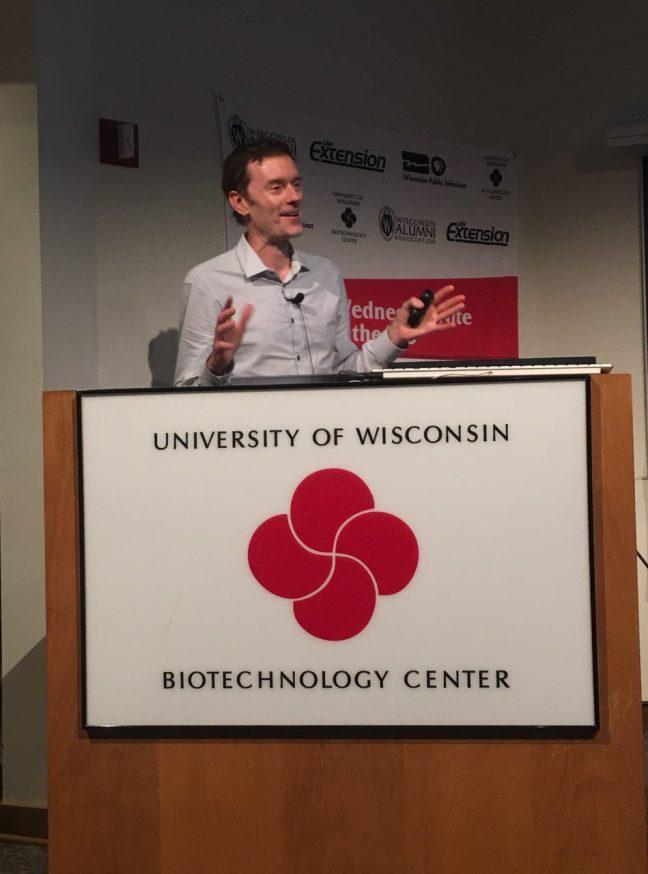Limnologist Jake Vander Zanden spoke Tuesday night about historical limnology at the University of Wisconsin.
The lecture series, led by emeritus professor Cora Marrett, explores the past and present endeavors of different fields on campus that embody the Wisconsin Idea. Vander Zanden’s speech connected the Wisconsin Idea to the development and continuation of limnology, the study of lakes, on Lake Mendota and beyond.
“[UW] is considered the birthplace of the field of limnology in North America,” said Vander Zanden.
Edward A. Birge, a scientist who single-handedly ran the biology department at UW, pioneered limnology, Vander Zanden said. When Birge originally arrived at UW, he conducted research on how crustacean zooplankton in lakes moved around to protect themselves during the night. While the zooplankton study had no conclusive results, Birge’s research of the lakes found there were seasonal changes in the lake water’s temperature.
This new knowledge about seasonal temperature changes garnered interest in the emerging field of limnology, Vander Zanden said.
Vander Zanden said Birge hired Chancey Juday as a professor around 1905. The two of them started working together, and soon after, Juday started teaching the first limnology class in North America, titled Zoology 315.
Vander Zanden also discussed what he called the second generation of limnology. In 1937, Juday’s student, author D. Hasler, was hired as an instructor of zoology at UW. Hasler conducted experiments on lakes and he later revolutionized knowledge about salmon.
While the rest of the world wondered how salmon were able to find their spawning grounds years after hatching, Hasler came across the answer in a strange coincidence.
“Author Hasler took a trip as an adult back to his childhood home in Utah,” Vander Zanden said. “The smell of his surroundings brought back childhood memories and that inspired him to think that, perhaps, that with salmon make it back to their streams to spawn was with the sense of smell.”
The Arthur Davis Hasler Center for Limnology was built to honor Hasler’s contributions, and the former Trout Lake Station, used for early limnological work, was moved to a new location, Vander Zanden said.
At UW today, limnology continues to grow, Vander Zanden said. Students and professionals continue to use the Arthur Davis Hasler Center for Limnology for testing water conditions, studying algae blooms, and determining the amounts of chlorine in Madison lakes.
Vander Zanden discussed multiple resources students and the public can use to learn more about limnology on campus, including journalist Adam Hinterthuer’s blog, open house events sponsored by the Department of Limnology and public boat rides.
“I think that where we are as a program today is deeply connected to the things, the decisions that people [in the field of limnology] made along the way,” Vander Zanden said.


